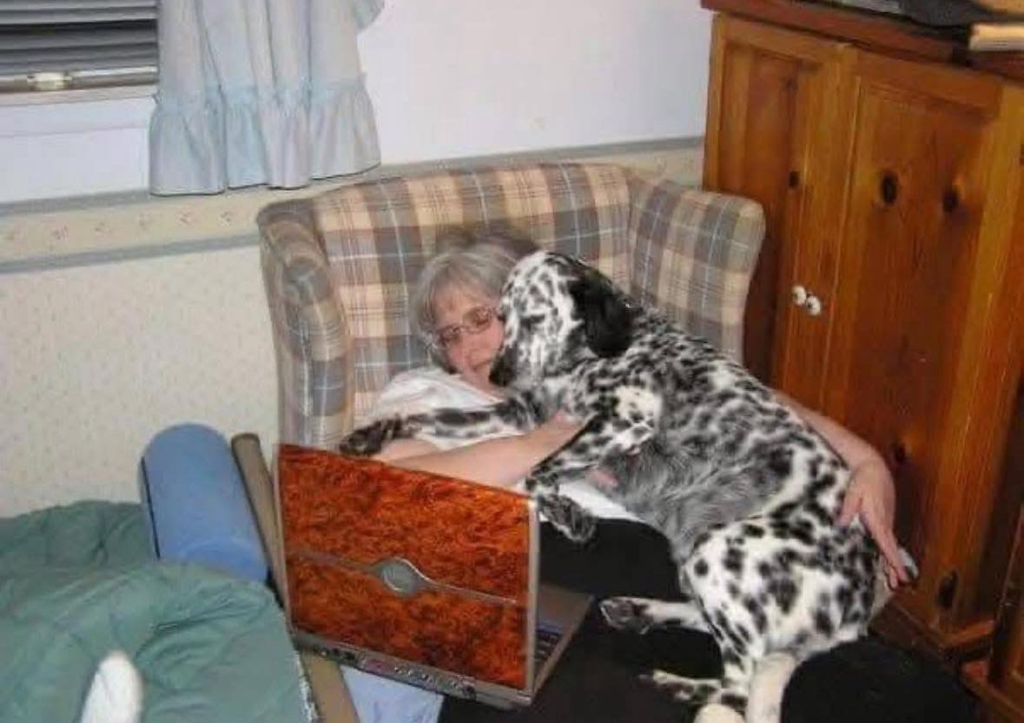On Tuesday evening, I received some news that wrenched at my heart: our neighbor had taken his 11-month-old dog—an adorable spotted Dalmatian mix—and returned him to a local animal shelter. The reason? Frustration. Behavioral issues. A sense that the dog just didn’t “fit.” But as I discovered over the next few days, there was a far greater story: one of bonding, confusion, and ultimately love.
A Troubled Past, a Confused Present
It all started one rainy Friday morning. I saw this damp, shivering dog, without tags, roaming around my garbage bins. His fur smelt of wet earth and something worse—all of it suggesting he’d been wandering for a while. When I stepped out onto my porch, he looked up at me, sniffed the air, then, oddly as if he knew exactly what to do, he ran, sat at my feet with his nose lifted, and just waited. He was leashed by the collar, and though the tags were missing, his collar was enough. I brought him in briefly, hoping to help him find his way home.
Inside, there was chewing, requestings for food, longing looks out the door. He obviously needed someone but the ownership seemed unclear. I made signs, left messages. Then the pounding came: he had followed me back, broke his collar, and was now outside my screen door, pressing his paws, desperate for attention.

A Reunion Attempt, but Not Yet Home
That evening, my husband took the little Dalmatian in. He dried him, bathed him, gave him food, warmth, and an ear. The next day, I put up flyers, knocked on doors, asked around. One neighbor pointed me to his home. I went over, explained everything. The owner’s frustrations poured out: the dog was “destructive,” escaping his tie-out, making messes indoors, rolling in filth. The owner—clearly overwhelmed—had no patience left. In a moment that crushed me, he yelled in anger, calling the dog “Spots.” The dog shrank at the word.
I offered more than words—I brought training-videos, offered help, offered the dog a place to stay occasionally. But nothing changed. Until Tuesday night, when the owner returned the dog to the shelter after yet another mishap—another mess, another escape, another moment of chaos.
The Bond That Wouldn’t Let Go
Here’s what stunned me: this young dog, who clearly had been through turmoil, bonded with us almost immediately. He got along with our own dogs—especially Toby, our smaller one, who often got picked on by our big dog, Megan. With them, this dog was playful, cooperative, affectionate.
When I called him by a name I’d used once—“Casey”—he responded. Not at first—he was cautious—but then he ran over, wagging, sitting at my feet. “Spots” meant nothing to him; “Casey” did. Can you imagine? This connection, this memory.
The Shelter Visit and a New Beginning
I called the shelter on Friday following the return. I showed up with the older adoption paperwork. There was resistance—questions about showing patience, about whether he “knew” how to be caged (ridiculous requirement, but they had their rules). I waited. Then finally, at 3 PM, they allowed me into the meeting room.
The moment he saw me—his tail almost jumping off his body—he squealed. He rushed over, buried his face in my neck. He recognized me. I said, “Casey, come!” and he obeyed, sat right down at my feet. No commands, no treats. Just recognition. That was the instant I knew: this was home.
What This Means—and What He Gave
We adopted him the same day. Casey, as we now call him, came into our family at 11 months old, but you’d never guess he hadn’t always been here. Over the years he brought laughter, companionship, antics, and love. He was smart and mischievous—yes—but every bit of trouble was worth it for the joy he gave.
When Casey passed nine years later—from a brain tumor—Toby, our smaller dog, stopped howling. It had been their shared ritual. It told me that Casey had become more than a pet—he was Toby’s brother, friend, companion. And mine.
Reflections
Why did this story matter so much to me? Because Casey’s journey is one many dogs face: confusion, rejection, hope for someone to care. It’s easy to judge when an animal acts out—making messes, chewing, escaping—but those are often symptoms: anxiety, fear, lack of guidance.
We didn’t just take Casey in—we gave him patience, structure, and love. In return, we got loyalty and pure joy. His 9 years with us were too short, but they changed our lives, and I hope this story changes how people see “problem dogs” ever again.